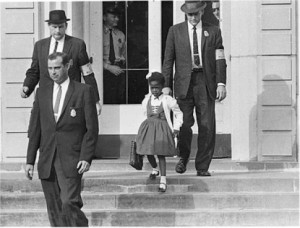
Time To Transform Public Schools: Part 1 – Brown v Board, An Incomplete Journey
On May 17, 1954 the Supreme Court declared state laws establishing separate public schools for black and white students unconstitutional, ruling that “separate educational facilities are inherently unequal.” That was three years before I was born and it shaped my life and the generations to follow. As an African American woman who attended public schools, had a career in the technology and education fields, and has four children in the public education system, I wanted to take this time to reflect on how this important Supreme Court decision impacted African Americans in our public education system to date.
Prior to the ruling, the majority of black students across the nation (particularly in the South and Midwest) attended schools in their community which were run and taught by black teachers. The facilities were in shambles, text books were not on par with the white schools, the pay for staff was less and they received less from the local governments. Many graduates from these black schools went on to attend black universities and run businesses in their community, while others secured jobs in less segregated areas of the country.

Six year old Ruby Bridges is escorted by federal marshals in 1960.
Just like every other law allowing blacks to partake in American life, many whites were not willing to comply with the law and progress was slow. As black students began to integrate schools, they endured a great deal of mental and physical abuse. In order to avoid compliance with the law, some white schools went to the extreme and chose to close down rather than integrate. Some white schools required black students to take an entrance exam to see if they could handle the “rigor” of being in a white school. In 1960, Ruby Bridges took such a test, passed and at the age of six was eligible to attend a white school that was five blocks from her home instead of the black school she had to travel several miles to attend. On her first day in her new school, Ruby was escorted to school by federal marshals while she endured racist taunts and threats. I often put this into context for my own children by reminding them I was three years old at the time Ruby Bridges had to be protected by federal marshals just so she could attend her neighborhood school.
Ruby’s is but one story. There are a myriad of stories about the early days of school desegregation. In the decades since, what we all came to realize was integration does not necessarily mean opportunity and it certainly does not mean equality.
The System Was Not Made For All Students
I want us all to take a moment to reflect on this. Are we naïve enough to believe it was only the white parents and citizens who didn’t want black students in their school and the administration running the white schools welcomed the black students with open arms? I don’t think so. Many teachers did not believe the black students belonged, they did not believe the students had the aptitude, and the teachers’ behavior reflected this belief. Black students were faced with low expectations, endured verbal abuse and were disciplined more often and more harshly by teachers. Imagine how difficult it is to be at your best in such a situation. Of course there were exceptions, but by and large the black experience in integrated public schools was not productive.
The public education system never properly prepared for integration—not in 1954 and not today and it still lags behind in providing equal education to our most vulnerable. For decades, black and other minority students have been failed by the system. After decades of integrating schools—either by force or by changes in housing policies—we continue to face the same problems of belief and behavior, but today I believe it is more about lack of exposure to, and relationships with, black families (and other families of color) than racism.
We have come a long way in race relations in terms of opportunity, but the data clearly shows we continue to lag behind in our public education system—the entity that shapes lives of 90% of the children in our country. The No Child Left Behind act helped shed light on the issue, but failed to really deal with the causes and instead focused more on standardized tests. Which begs the question: “Why is the right to a high quality education still filled with barriers and hurdles?” My answer to this question is this: as a country, we are unwilling to deal with the real changes that are needed—changes in the belief, attitude and behavior of the adults in the system, as well as the structure of the system itself.
Public Education in Washington State
From this point on, I will address the education system in Washington State only, as it is the system I have the most intimate knowledge of, personal experience with and a professional investment in, but I suspect this will sound familiar to some of you regardless of what state you or your children were educated in.
Let’s start with the leadership in our education system in which 80% – 95% of positions from the top leadership in districts, to the head of schools, to the classroom teachers are primarily held by white adults. Race matters when it comes to teaching. Lessons are easier to learn when you can relate to what is taught, how it is taught and who teaches. Similarly, content has to be culturally relevant for students. Teachers also are the primary gatekeepers to a guild or field of study. Teachers don’t dispense skills as much as they usher future apprentices into a particular academic discipline. In this regard, culture matters.[1] Our most diverse districts enroll on average 65% students of color (with some schools as high as 80%). This combination of low percentage of adults of color and high percentage of students of color presents challenges to teaching and learning that manifests itself in many ways such as, high suspension/expulsion rates for black students, moving black students to special education programs in alarming rates, low expectations, low enrollment of black students in advanced classes, black students not seeing themselves in any curricular content, black students feeling their teacher doesn’t understand them or care about them, etc.
This is not to say district and school leaders haven’t tried to make things better for kids of color in their schools. Unfortunately in many cases they do the easy things that have little to no impact. For example: millions of dollars have been spent on sending teachers to cultural competency workshops, yet there is very little change in their beliefs or behavior. Bringing in new curricular materials, changing standards, hiring the token person of color to handle community relations for the entire district are other efforts that haven’t worked either.
Frankly the entire structure of public education is broken. It is setup for the convenience of the adults and not for the true education of the students. Thousands of kids are crammed into schools and treated as if they are generic entities who all work and learn the same. Kids are managed instead of developed. Policies and practices are applied regardless of whether they are actually good for the students involved.
We can and should do better!
One would think an ideal situation is one where all students have access to equally well funded public schools regardless of community wealth or poverty. But there is more to it than being well funded. Teachers and administrators should build authentic relationships with students, their families and each other to create a learning community within the school where kids and adults feel respected and supported; that is what works. That is the direction we should be going. It is not a “drive by” solution. It is an investment (financial, human resources and time) that we, so far, have not been willing to make.
There is at least one example in Washington State where that focus and intentionality is happening—TAF Academy—a small neighborhood school that is socioeconomically and academically balanced, has a high percentage (43%) of teachers of color and places high value on community. It is a unique school—started as a partnership between Federal Way Public School and TAF—that is ready to lead the way in how school should work for students.
TAF Academy is a STEM school rooted in a culture of equity, authentic learning, academic achievement and college readiness. Learning is designed for and often by the students, teachers collaborate as part of their daily practice and learn alongside their students, parents are welcome in the classrooms at any time, and professionals in other fields participate in teaching and learning. There is a bond of caring at the school between all the groups—teachers, students, and support staff—where people look out for each other and students support each other to do their very best.
Over the next few months I will be writing in more detail about how we can rethink our school system, what it takes to get there (it isn’t cheap and doesn’t happen in a blink of an eye either), and how we can all be a part of the work.
Let’s come together and make this law work the way the framers of Brown v The Board of Education intended it to!
Click here to read part 2 in the series.
[1] NewsOne.com May 12, 2014. Brown v Board of Education’s Uncertain Legacy on Teacher Diversity By Andre M. Perry, Ph.D




